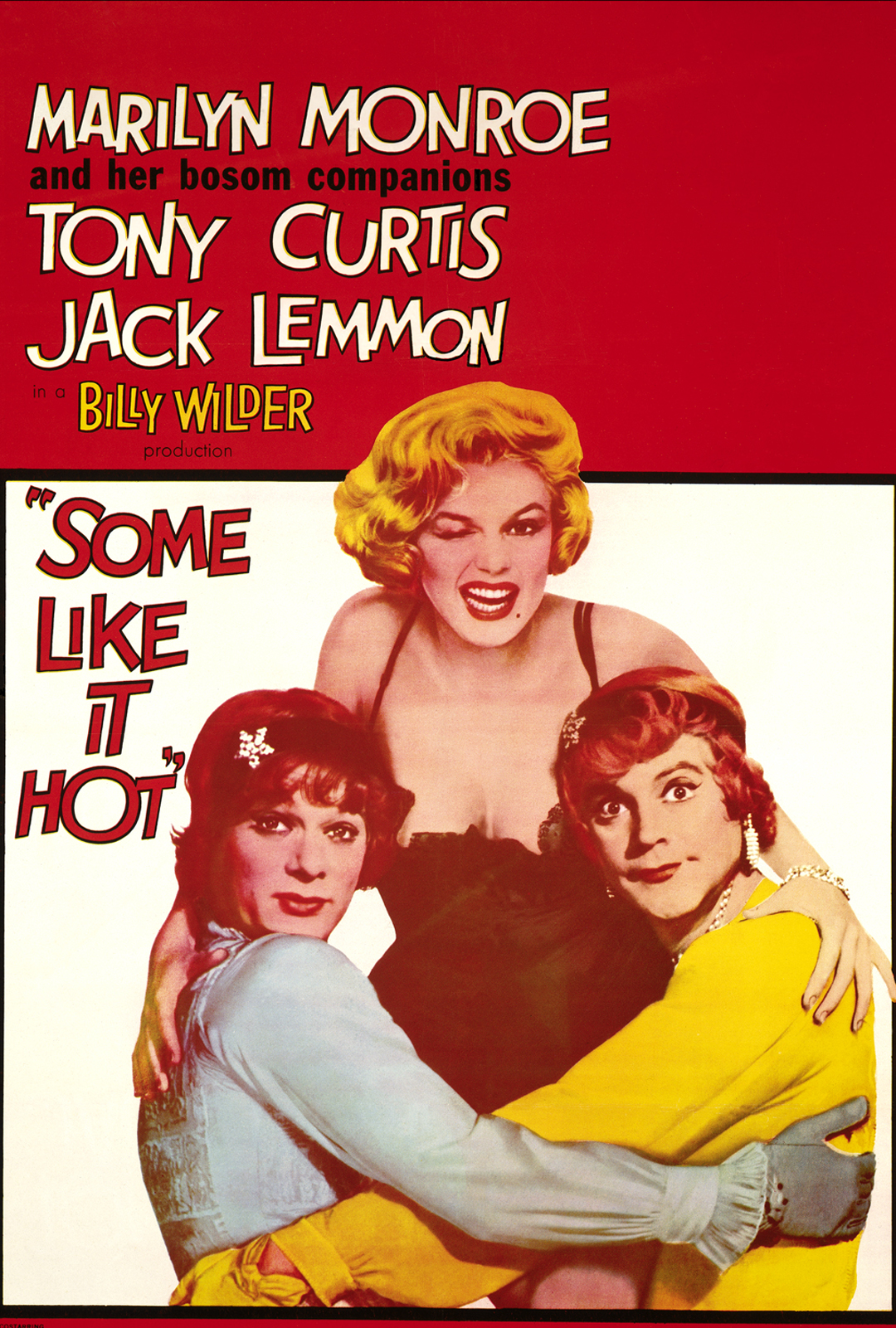Billy Wilder’s 1959 film, Some Like it Hot, was ranked, by the American Film Institute, on their Top 100 at number 22 and at number 1 on their Top 100 Comedies and the BFI ranks it at 42. I can appreciate the effect that it had on cinema and the enduring history of Marilyn Monroe, but I don’t see the accolades. The film is not my favorite Billy Wilder movie, nor my favorite Jack Lemmon, nor my favorite comedy. Watching it was not a struggle and I did laugh, but I don’t forsee too many future views. Maybe I am wrong.
So, what is it about Some Like It Hot that I did not care for? There is so much more heart in the other Wilder films I have seen that was missing from this. The penniless musicians who witness a crime hide out as women to save their lives, a story that never gets resolved.
A character, played by Marilyn Monroe, who personifies the stereotypical dumb blonde, goes weak in the knees at the sound of a song on a saxophone (the instrument that Tony Curtis plays, of course). It was difficult to watch her act a profoundly weak character, but I have never been a fan of Marilyn Monroe.
The film, regardless of my feelings, comes with two very important lessons. The first is that you need to, always, resolve the story. This is an award-winning picture that runs away from the story. Preferring character resolution over narrative does not work for me when you can do both; perhaps it was given a pass being a comedy, or perhaps I nodded off when everything came to a head, I can not say, but I am not interested in a second viewing anytime soon.
The second lesson is about the characters you create. A writer has an amazing power to spin up a character that drives a narrative and has an affect on the emotions of the readers. The ability to imbue a characters with the best traits is probably not the best movie as flaws create motivation; conversely, creating a character that is overtly flawed can detract from what you are trying to tell, especially when it is a major character.
Trailer
Important Links


